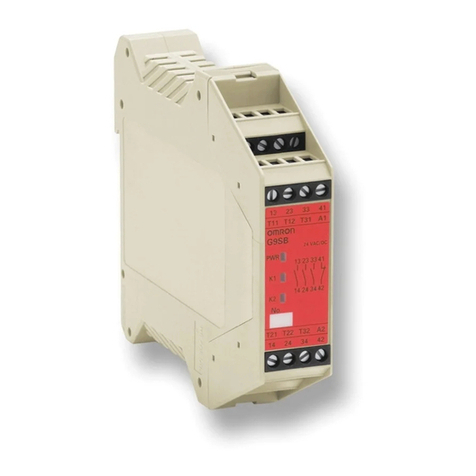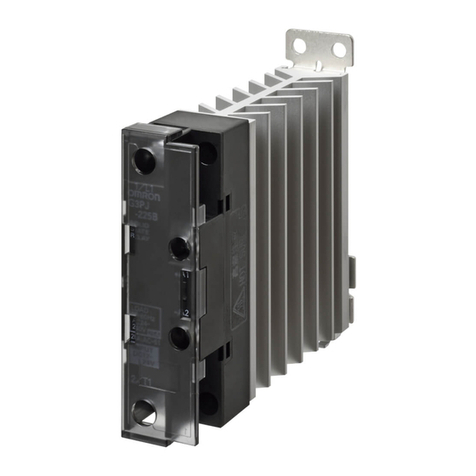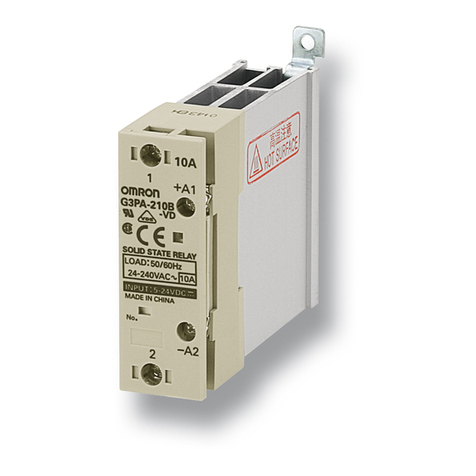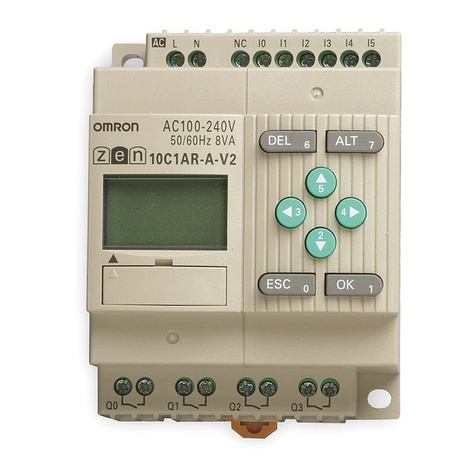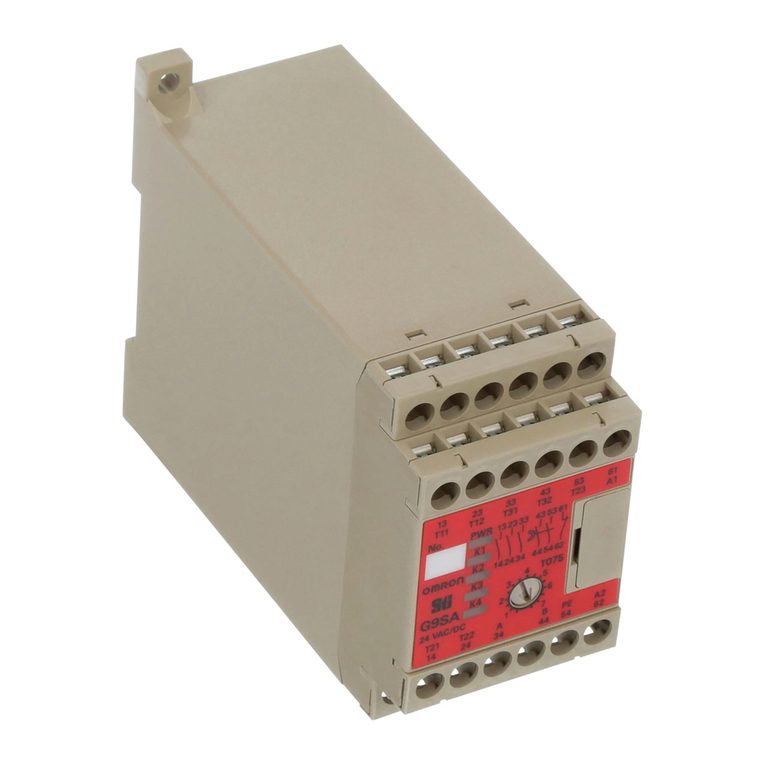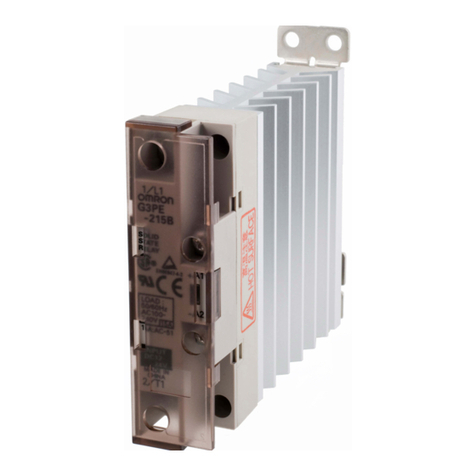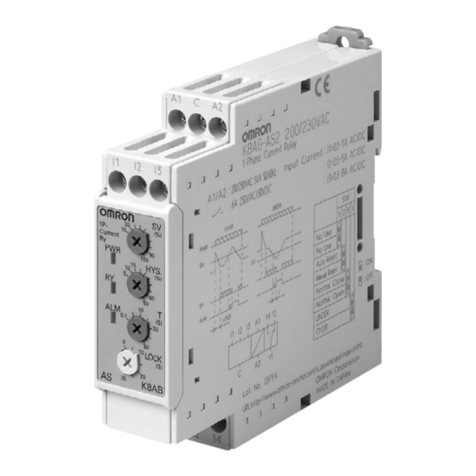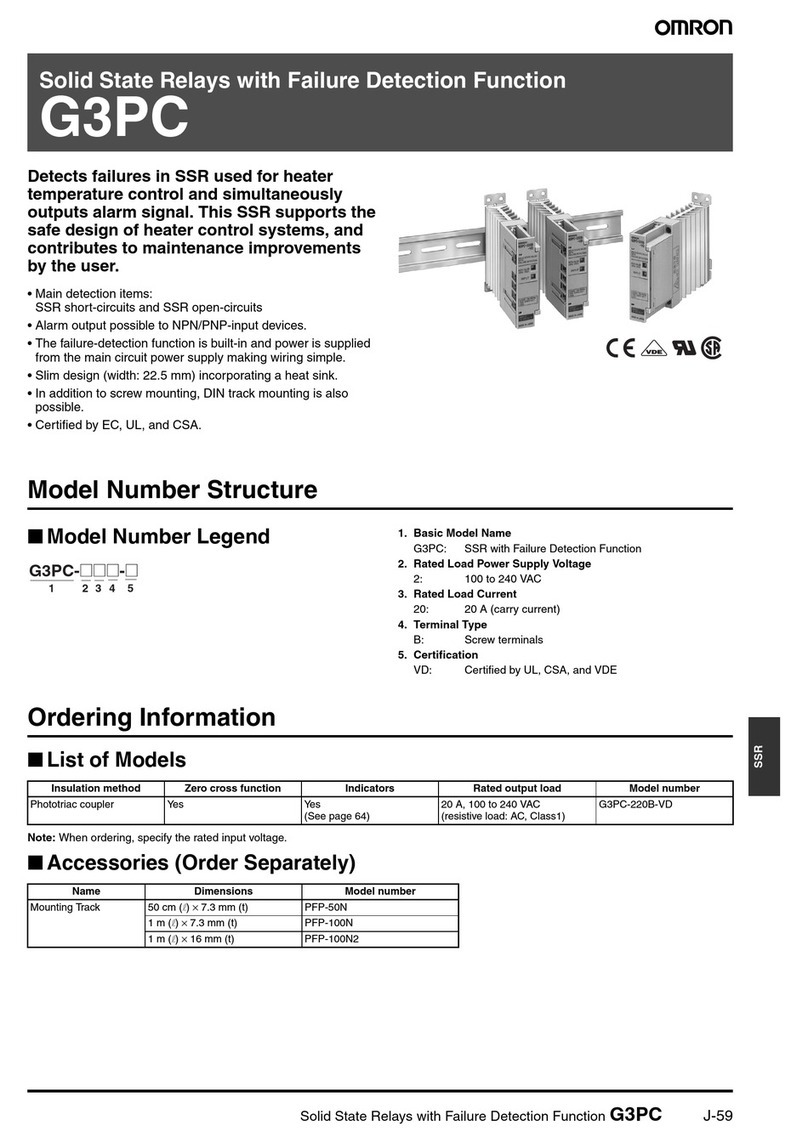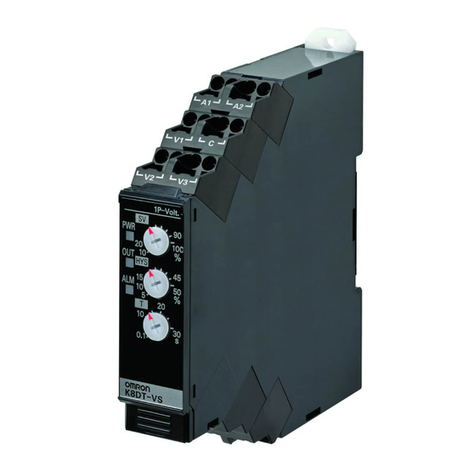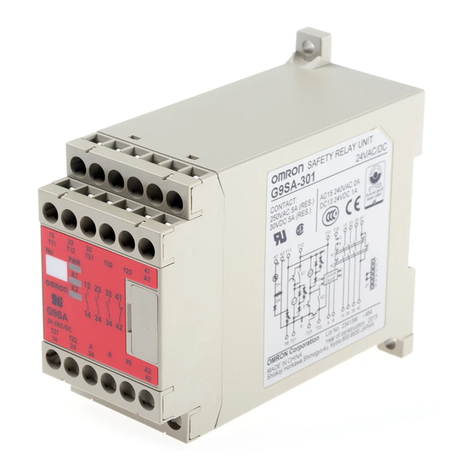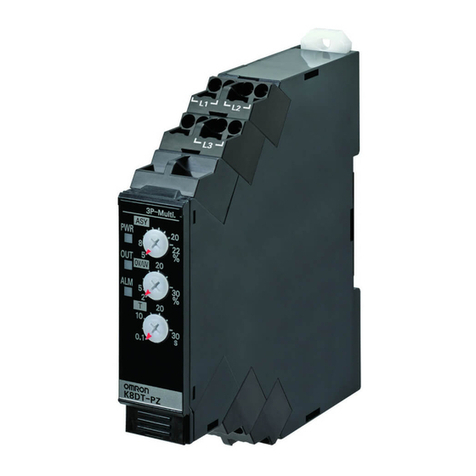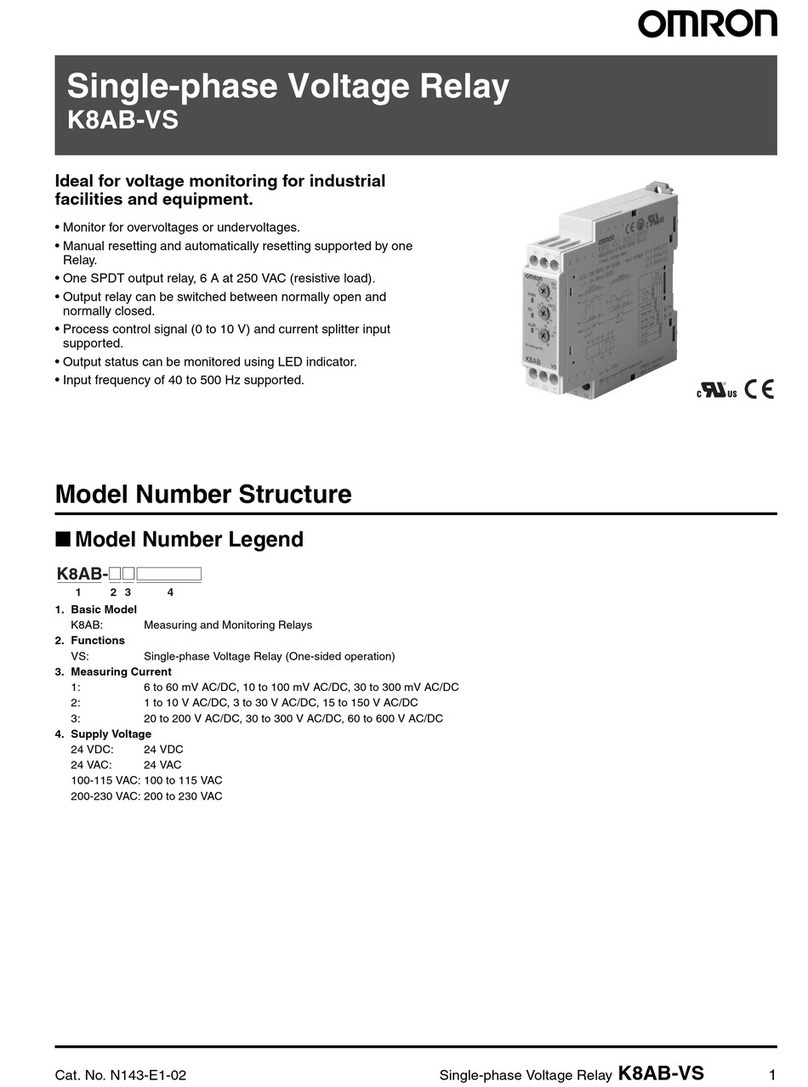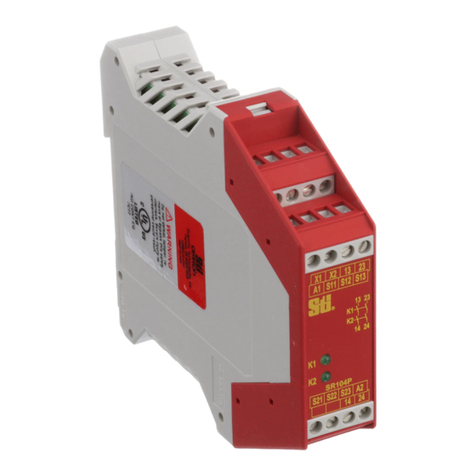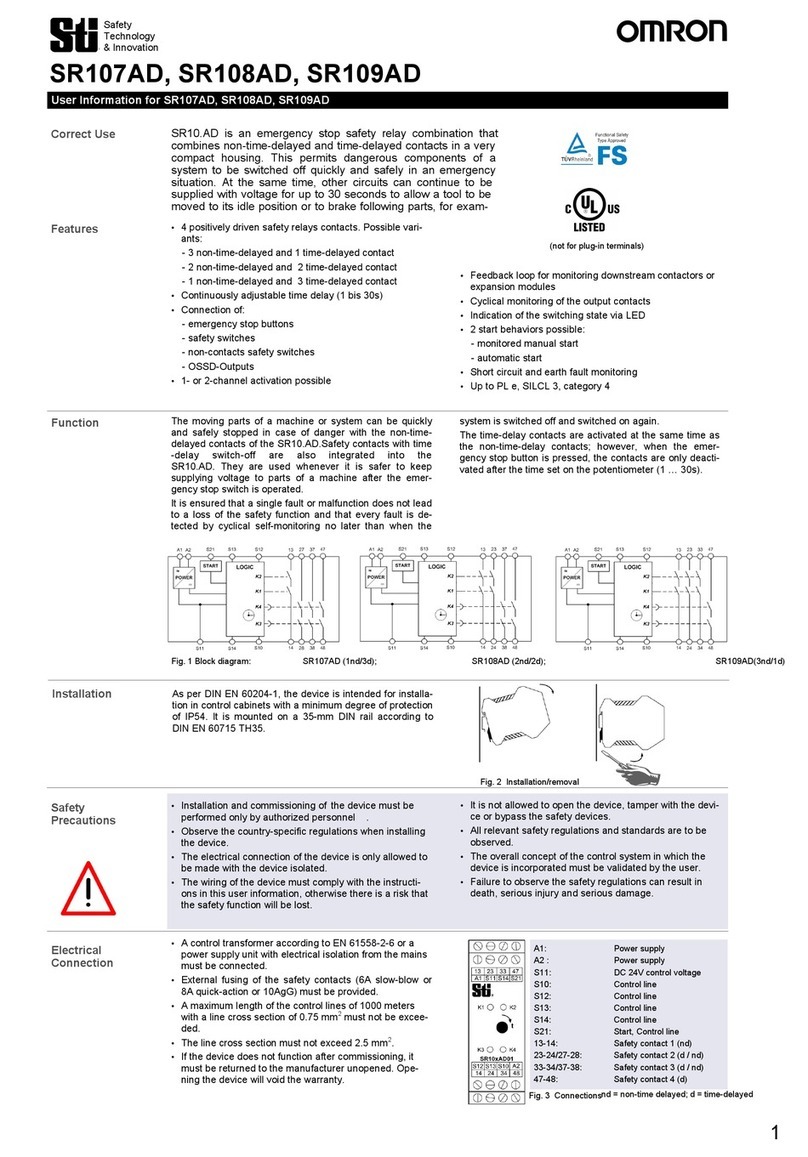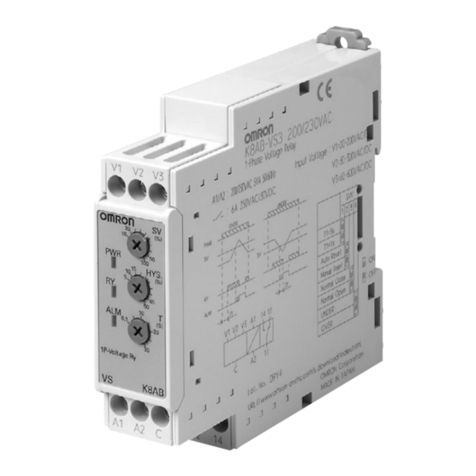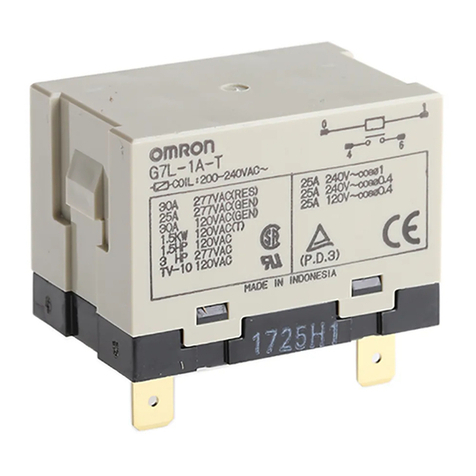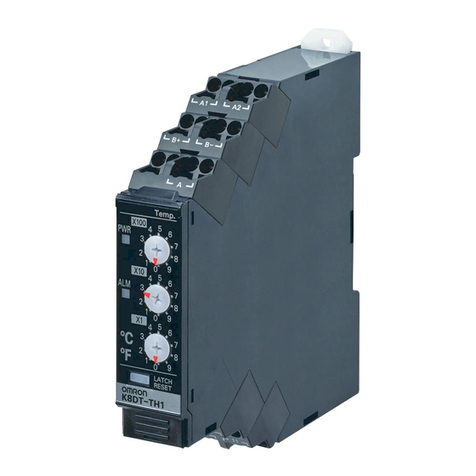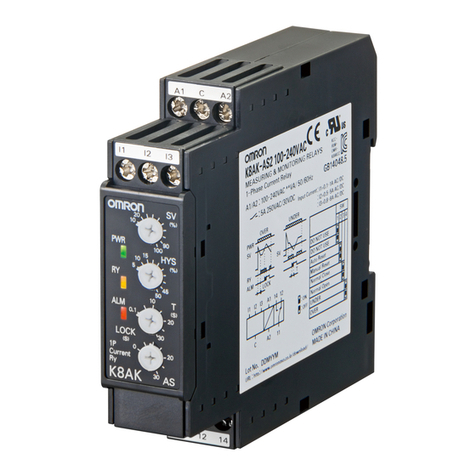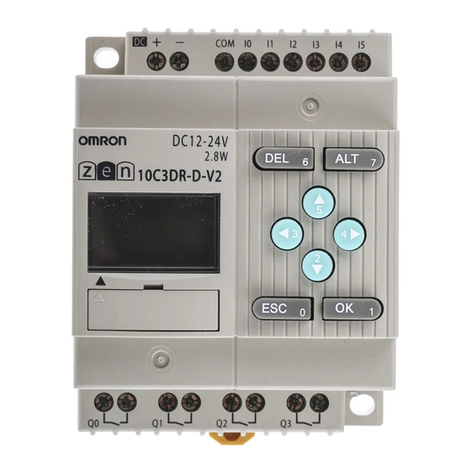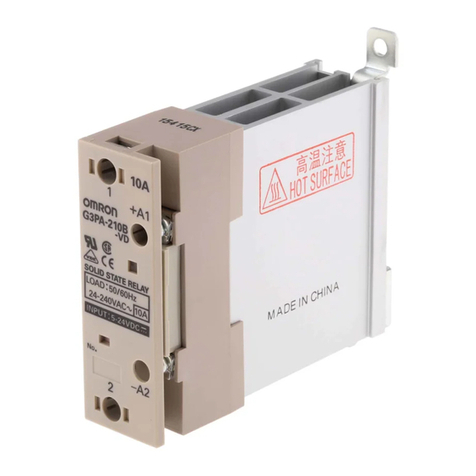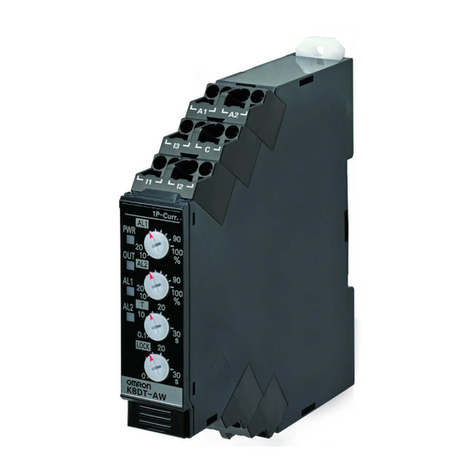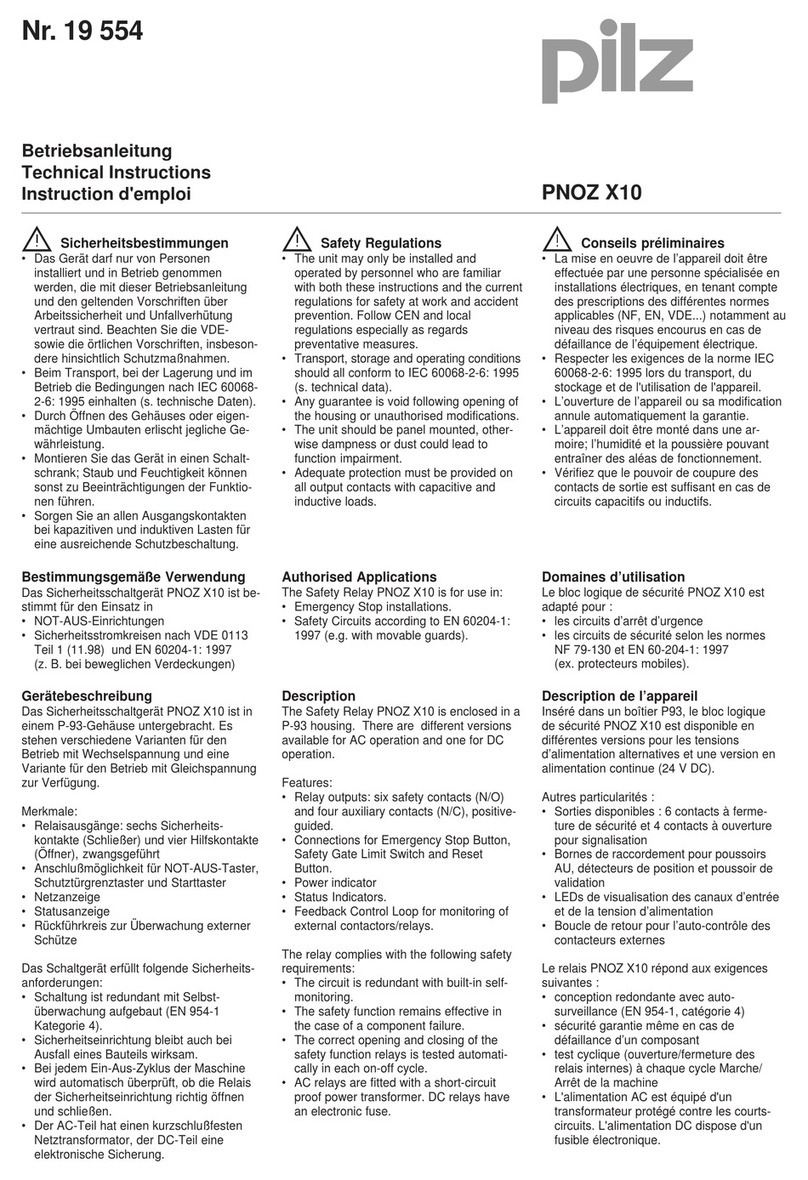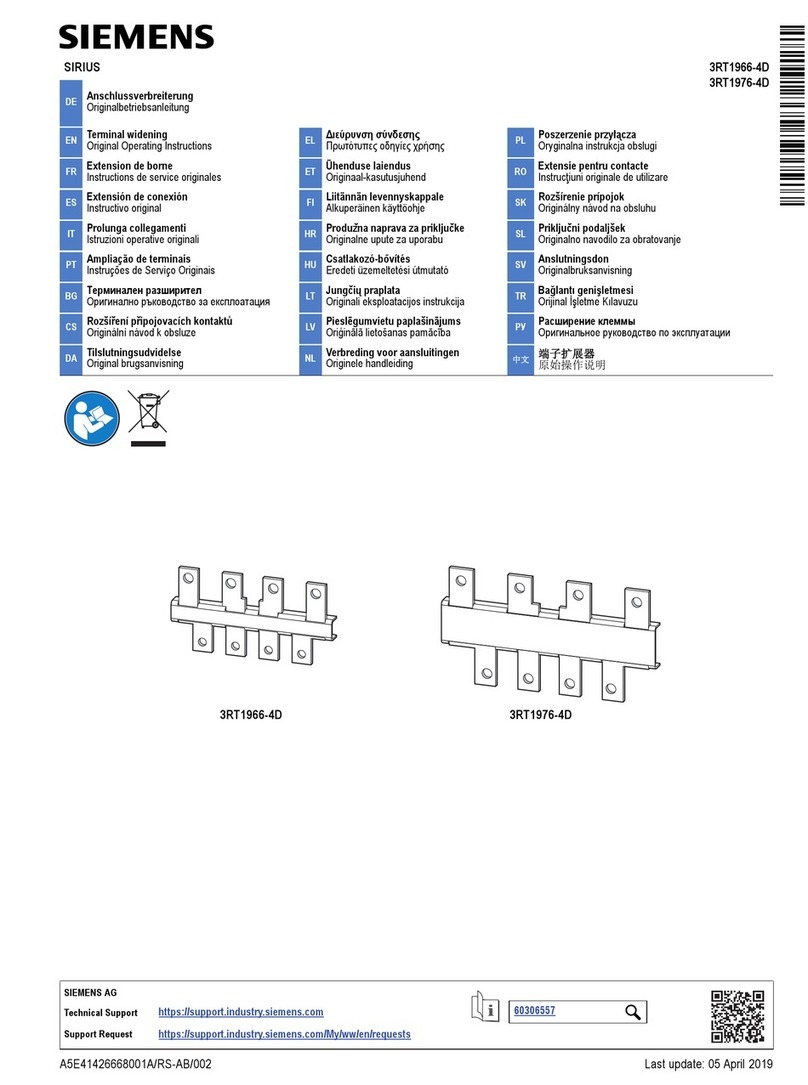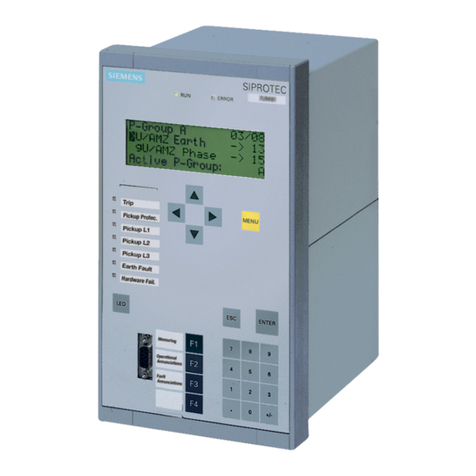8Programmable Relay ZEN V2 Units
■Characteristics
Note: 1. Up to 34 points for CPU Units with 10 I/O points. With Communications-type CPU Units, however, the CPU Unit has 6 inputs and 3 outputs, for a maximum
of 33 I/O points.
2. Not provided for LED-type CPU Unit without display (i.e., ZEN-@C2@@-@-V2 models).
■Communications Specifications (Communications-type CPU Units)
Item Specification
Control method Stored program control
I/O control method Cyclic scan
Programming language Ladder diagram
Program capacity 96 lines (3 input conditions and 1 output per line)
Max. No. of control I/O points 44 points (See note 1.)
CPU Units with 20 I/O points: 12 inputs and 8 outputs
Expansion I/O Units: 4 inputs and 4 outputs each, up to 3 Units.
LCD display (See note 2.) 12 characters ×4 lines, with backlight
Operation buttons (See note 2.) 8 (4 cursor buttons and 4 operation buttons)
User program backup Internal EEPROM, Memory Cassette (optional)
Power interruption hold Internal holding bit status, holding timer/counter present values, calendar and clock (year, month, day of month,
day of week, time)
•Super capacitor backup time: 2 days min. (25°C)
•Life of optional battery: 10 years min. (25°C)
Calendar and clock function
(See note 2.)
Accuracy: ±15 s/month (at 25°C)
Timer accuracy 0.01 s unit: −0.05% −10 ms max. (rate for set value)
min/s unit: −0.05% −1 s max. (rate for set value)
h/min unit: −0.05% −1 min max. (rate for set value)
Maximum counting speed 150 Hz: 8-Digit counter (F) set to high-speed operations (CPU Units with DC power supplies only)
(The counting speed may be less than 150 Hz depending on the cycle time of the program. See page 21.)
Insulation resistance 20 MΩ(at 500 VDC) min.:
Between power supply terminals and all output terminals.
Between terminals of different output circuits.
Between all terminals of CPU Unit and all terminals of Expansion I/O Unit.
Insulation • Reinforced insulation
Between power supply or input terminals and output terminals.
Between terminals of different output circuits.
Between all terminals of CPU Unit and all terminals of Expansion I/O Unit.
•No separation
Between power supply and input terminals of the same unit.
Between power supply terminals of CPU Unit and computer connector,
Battery Unit connector, or all Expansion Unit connectors (all interfaces are live parts).
Dielectric strength 2,300 VAC, 50/60 Hz for 1 min (leakage current 1 mA max.):
Between power supply terminals and all output terminals.
Between terminals of different output circuit.
Between all terminals of CPU Unit and all terminals of Expansion I/O Unit.
Vibration resistance Conforms to IEC60068-2-6, 5 to 9 Hz with 3.5-mm single amplitude, 9 to 150 Hz acceleration 9.8 m/s2,
10 sweeps each in X, Y, and Z directions (1 octave/min)
Shock resistance Conforms to IEC60068-2-27, 147 m/s2, 3 times each in X, Y, and Z directions.
Weight CPU Unit with 10 I/O points: Approx. 300 g max.
CPU Unit with 20 I/O points: Approx. 350 g max.
Expansion I/O Unit: Approx. 120 g max.
Item ZEN-10C4@R-@-V2
Communications RS-485 (two-wire, half duplex)
Synchronization method Start-stop synchronization
Baud rate 4800, 9600, or 19200 bps
Transmission code ASCII
Data bit length 7 or 8 bits
Stop bit length 1 or 2 bits
Error detection Vertical parity (none, even, odd), Block check character (BCC)
Flow control None
Interface RS-485
Retry function None
Node number 0 to 99 (default: 1), XX (broadcasting)
